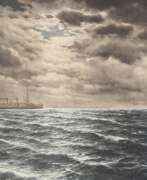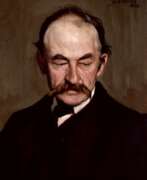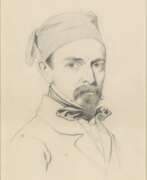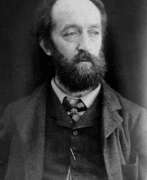Romanticism 20th century
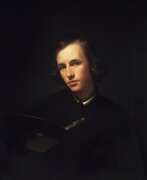

George Henry Hall was an American still-life and landscape artist. He studied art in Düsseldorf and Paris and he worked and lived in New York City, the Catskills of New York and in Europe. His works are in museum collections in the United States and Europe. Over the course of his career he sold 1,659 paintings.


Ludwig Hartmann was a German animal painter.
Hartmann studied at the Academy of Fine Arts in Munich and was a member of the prestigious Munich School of Artists, which flourished during his lifetime, he was awarded medals in Vienna in 1869 and 1872.
The artist's greatest success came from his works with horses, painted in bold colors. But Hartmann specialized in depicting simple, working horses, most often at rest. In his soulful paintings, horses tired after hard work enjoy peace - in the stables or at a watering hole.


Rudolf Hausleithner was an Austrian painter.
His works primarily include oil paintings with romantic themes, portraits and portrait sketches, petit bourgeois subjects, history paintings and various commissioned works.
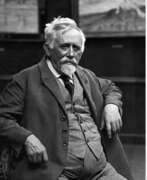

Hermann Hendrich was a German painter of the last quarter of the nineteenth and first third of the twentieth centuries. He is known as a painter known for his works in the Romantic and Old Germanic style.
Hendrich considered the canvases and interior for the "Walpurgis Hall" near Thale, created in 1901, to be the pinnacle of his work. For the "Nibelungen Hall" on Mount Drachenfels, opened in 1913 in honor of Richard Wagner, he painted 12 canvases based on ancient Germanic legends. The artist also created illustrations for Goethe's works, as well as exhibitions in the "Hall of German Sagas" in Solingen.
Hendrich was a co-founder of the Verdandi Union, which opposed modernism in art. A square in Berlin, Gendrichplatz, is named in his honor.
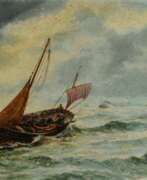

Bernard Benedict Hemy is an English marine painter.
He was born in Australia, but his family soon returned to the United Kingdom, to Newcastle-upon-Tyne. Like his painter brothers, Bernard Hemy studied painting at the Newcastle School of Art. He specialized in depictions of the daily activities of fishermen, realistically documenting fishing scenes, coastal and harbor views, ships and sailing boats.
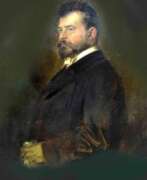

Adolf Hengeler was a German artist and illustrator, renowned for his distinctive style that beautifully merged humor with meticulous detail. Born on February 11, 1863, in Kempten, Allgäu, Hengeler's journey in the arts led him to Munich, where he left an indelible mark on the art and culture of the era.
Hengeler's body of work is diverse, encompassing applied graphics, caricatures, and picture stories. His graphic work, ranging from airy color drawings to precise ink strokes, has often been compared to Wilhelm Busch for its unique charm and precision. Notably, Hengeler regularly contributed to the "Fliegende Blätter" and created popular publications like the "Münchner Kinderfibel" and the "Kriegstagebuch 1914/15".
In painting, Hengeler focused on landscapes, often featuring cherubs and mythical creatures, and idyllic scenes of people in landscapes. His paintings are characterized by earthy brown tones, highlighted by bright local and pastel tones in flesh, clothing, or flowers, capturing the beauty of nature in Oberbayern and Allgäu. In his later years, Hengeler turned to Christian legends and biblical figures, adding a spiritual dimension to his natural scenes.
Hengeler's legacy is preserved in the Museum der Stadt Kempten, as per the bequest of his grandson, the art historian Peter von Bomhard. The museum houses Hengeler's personal and artistic belongings, including furniture and portraits, in a dedicated Hengeler Room.
For collectors, auctioneers, and experts in art and antiques, Adolf Hengeler's work offers a unique window into the culture and art of his time. His contributions to the German art scene, especially through his distinctive style and thematic diversity, make his works highly valued and sought after.
For those interested in staying updated on new product sales and auction events related to Adolf Hengeler's works, we invite you to sign up for our updates. This subscription is tailored specifically to keep you informed about relevant events and opportunities in the world of Adolf Hengeler's art.
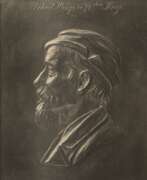

Robert Eduard Henze was a German sculptor. He studied at the Dresden Academy of Art under Ernst Ritschel and after his death under Johannes Schilling and Ernst Henel.
Robert Eduard Henze created many sculptures, including portraits, allegorical and religious compositions.
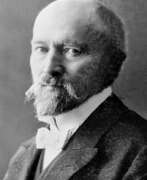

Johann Caspar Herterich was a German painter of the last third of the nineteenth century. He is known as a historical and genre painter, as well as a teacher at the Royal Academy of Fine Arts in Munich.
Herterich created a number of portraits in addition to canvases on historical, religious and genre themes. His works included dramatic scenes, sentimental genre scenes from family life. The artist actively participated in the Arts and Crafts movement and was involved in designing chandeliers and other decorative elements. Among the master's pupils was his younger brother Ludwig von Herterich, who also became a famous artist.


Josef Hoffmann, an Austrian landscape artist, made significant contributions to the art world with his distinct portrayal of nature. His paintings, rich in detail and vibrant with color, capture the essence of the Austrian landscape, offering viewers a window into the serene and picturesque environments of the 19th century.
Josef Hoffmann's landscapes go beyond mere representation; they evoke the emotions and atmosphere of the settings he depicted. His ability to blend colors, manipulate light, and convey depth transformed his canvases into living, breathing scenes. These qualities made his work resonate with art enthusiasts who sought to experience the tranquility and beauty of nature through his eyes.
Collectors and art historians value Josef Hoffmann's work for its authenticity and the insight it provides into the landscape painting techniques and trends of his era. His dedication to capturing the natural world contributes to our understanding of the artistic and cultural contexts of 19th-century Austria.
For those who are passionate about the history of art, particularly landscape painting, Josef Hoffmann's work offers a fascinating study. By subscribing to updates on Josef Hoffmann, collectors and experts can stay informed about exhibitions, sales, and scholarly research related to this notable artist, deepening their appreciation for his contributions to the art world.
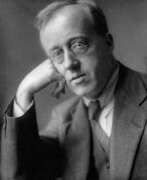

Gustav Holst, birth name Gustavus Theodore Von Holst, is an English composer and educator. Holst studied at the Royal College of Music in London, including playing the trombone, and for several years after graduation he earned a living as a trombonist in various orchestras. In 1905 he became a music teacher at St. Paul's Girls' School and later music director of Morley College, positions he retained throughout his life. A brilliant educator, Holst pioneered music education for women.
Holst's music is often built on English national folklore and has much in common with the work of composer and contemporary Vaughan Williams. However, he combines it with an international flavor based on the styles of Maurice Ravel, Igor Stravinsky, and other innovators, with a continuation of English Romanticism. This influence is reflected in Holst's most famous work, the orchestral suite The Planets. Also in the Hindu opera Savitri and other cosmopolitan works.
Holst's works also include the opera Sita, Hymn to Jesus for chorus and orchestra (1917); Ode to Death for chorus and orchestra (1919), the opera The Perfect Fool (1923), the Choral Symphony (1923-24), the Double Concerto for Two Violins and Orchestra (1929), and Hammersmith for Orchestra (1930).
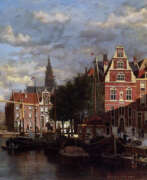

Johannes Frederik Hulk was a Dutch painter, draftsman, photographer and paint shop owner.
Johannes Frederik Hulk painted mainly landscapes, seascapes, towns, villages and harbours. He was a member of the Arti et Amicitiae in Amsterdam.


Carl Maria Nicolaus Hummel was a distinguished German landscape painter and etcher, renowned for his delicate representations of the natural world. Born in Weimar in 1821, Hummel embarked on his artistic journey under the guidance of Friedrich Preller at the Fürstliche freie Zeichenschule Weimar starting in 1841. His rich legacy is shaped by extensive travels across Europe, capturing the essence of each locale with a keen eye for detail and mood.
Hummel's artistry is marked by his adept use of light and texture, which brings scenes to life with a vibrancy that transcends time. His works, such as the serene "Valley of the Mills, near Amalfi" and the contemplative "Sky Study (Sunset)", showcase his skill in marrying color and form to reflect both the tranquility and the dramatic interplay of natural landscapes.
For art collectors and connoisseurs, Hummel's paintings are a testament to the romantic spirit of 19th-century art. His paintings are prominently featured in prestigious institutions across Northern Europe, including the Musée de la Vie Romantique in Paris. Each piece serves as a window into the historical and cultural narratives of the time, making them invaluable additions to any collection.
Renowned for his meticulous approach and the emotional depth of his work, Hummel's contributions to the world of art continue to inspire and captivate audiences. His ability to capture the sublime beauty of nature makes his work an enduring treasure in the landscape genre of the 19th century.
Stay informed about the latest exhibitions and auction events featuring Carl Maria Nicolaus Hummel's work. Sign up now for exclusive updates tailored for collectors and art history enthusiasts. Your subscription ensures you never miss an opportunity to add a piece of history to your collection.
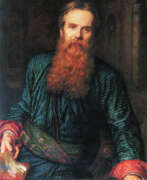

William Holman Hunt was an English painter and one of the founders of the Pre-Raphaelite Brotherhood. His paintings were notable for their great attention to detail, vivid colour, and elaborate symbolism. These features were influenced by the writings of John Ruskin and Thomas Carlyle, according to whom the world itself should be read as a system of visual signs. For Hunt it was the duty of the artist to reveal the correspondence between sign and fact. Of all the members of the Pre-Raphaelite Brotherhood, Hunt remained most true to their ideals throughout his career. He was always keen to maximise the popular appeal and public visibility of his works.
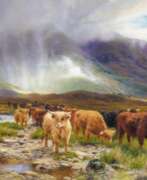

Louis Bosworth Hurt was a British landscape painter.
Hurt painted mainly Scottish mountain landscapes with cows grazing on alpine meadows. His family kept cattle and the artist knew the subject matter of his paintings well. Hurt exhibited many times at the Royal Academy.


Jan Baptist Huysmans was a Belgian orientalist painter, traveler and writer.
After graduating from the Antwerp Academy, Jan Baptist Huysmans traveled extensively. During his long and prolific artistic career he visited Greece, Turkey, Syria, Palestine, Egypt and Algeria. These travels resulted in numerous sketches and studies, sketches, paintings and memoirs by the artist, who was fascinated by the culture and landscapes of the countries he saw.
In addition to genre paintings of Eastern life, the artist created religious compositions for churches in Jerusalem and decorative panels for church and municipal buildings in Belgian cities.
Huysmans lived most of his professional life in Paris and exhibited in France, England, and Scotland. He also published several illustrated books about his travels, notably Travels in Italy and the East in 1856-1857.


